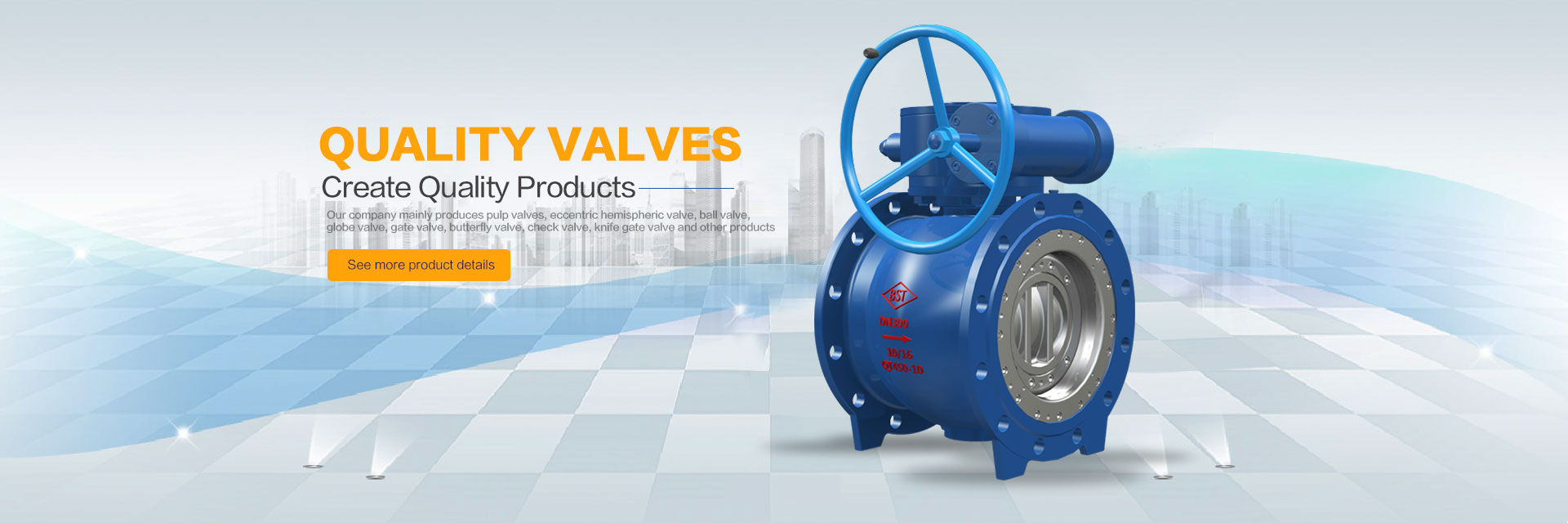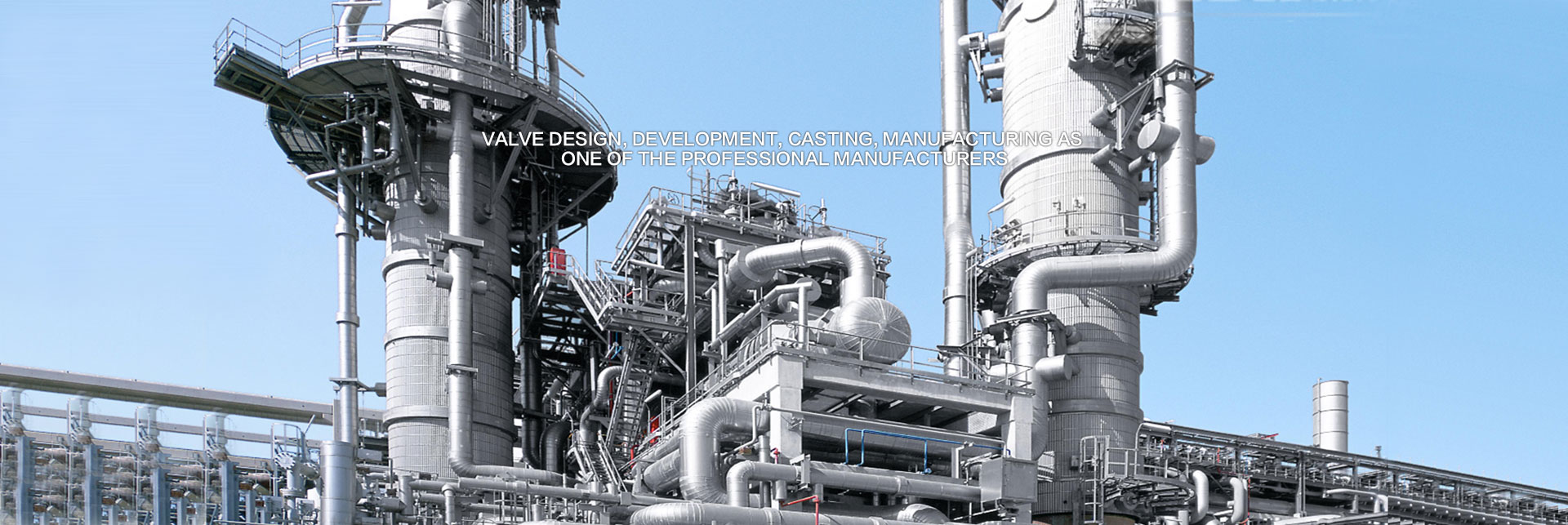Four major technical requirements of modern coal chemical industry for valve products
1 valve material requirements
Direct liquefaction is also called hydroliquefaction. In the hydrogenation process, the valve, pipeline and related equipment are in the high temperature and high pressure hydrogen gas, hydrogen damage is a very big problem. When high temperature and high pressure hydrogen sulfide coexists with hydrogen, the corrosion is also very serious. Because of this, austenitic stainless steel is usually used as valve material for corrosion resistance of high temperature hydrogen sulfide. In this way, the hydrogen embrittlement of stainless steel, sulfide stress corrosion cracking of austenitic stainless steel and hydrogen-induced peeling of surfacing layer may occur. There is also the problem of temper brittleness failure of Cr-Mo steel. Moreover, the possible damage caused by corrosive media such as ammonia and hydrogen sulfide in the logistics must be carefully considered. Because of the presence of coal-oil slurry in the direct coal liquefaction reaction, the wear problem of coal slurry on valve, pipeline and other equipment materials must be considered. Therefore, it is required that the materials used for manufacturing valves should have comprehensive performance that meets the requirements of use. Specifically, it should have:
(1) The compactness, purity and homogeneity of the material are superior to those of other materials, especially for thick (or large cross-section) steels.
(2) to meet the requirements of design specifications, chemical composition, room temperature and high temperature mechanical properties.
(3) to have the environmental embrittlement performance that can be used in a harsh environment for a long time.
In the valves tender documents for the density of the valve has a clear requirement for forging valves, generally through the forging ratio of forgings, grain size and other requirements to achieve the control of density requirements. However, for casting valves, it is only mentioned in the relevant technical documents that the density of the castings should be uniform and the shrinkage cavity and porosity of the castings should be eliminated. In fact, it is precisely the casting valve, often because of the different quality control of the casting process, resulting in a great difference in the quality of valve castings, the main influencing factors are: the choice of molding materials, the setting of gate and riser is different, the location and quantity of chills are different, the solidification sequence is different, and the cooling time is different, and so on. It will lead to great differences in density and homogeneity. The follow-up heat treatment process is also one of the key steps to ensure the quality of the valve. The temperature control of the heat treatment furnace, the placement of the castings in the heat treatment furnace, the holding time, the cooling mode and speed and other factors will affect the mechanical properties of the final valve castings.
2 valve process requirements
Coal direct liquefaction has the characteristics of high temperature, high pressure and hydrogen exposure of hydrogenation unit, and the coexistence of corrosion and wear of coal chemical industry. Therefore, the source of raw materials is very important. At present, no effective method has been found to control the selection of raw materials. Generally speaking, it is harmful to the composition of valve material, especially to the composition of valve material. Element content, such as S, P, O, N and total carbon equivalent, puts forward the corresponding clear indicators. Although this requirement is often higher than the basic general requirements of materials, but for the final product quality, these indicators alone are not enough, because the impact of raw materials mechanical properties of trace elements far more than these. Strictly speaking, our requirement is only to control the trace elements which are harmful to the mechanical properties of common materials, and it is not possible or impossible to list all the elements which may be harmful to the mechanical properties of metal materials. Therefore, the foundry should strictly control the source of raw materials, the raw materials processed should not only be smelted, but also further refined, especially to strengthen the furnace control, only in this way can the quality of castings be guaranteed.
On the premise of guaranteeing the quality of raw materials, there are still some special requirements for such devices.
(1) the precision casting process can not be used for casting valves of modern coal chemical plants. Because coal liquefaction is hydrocracking process, because of the special penetration of hydrogen molecule to metal materials, and the castings produced by precision casting are relatively loose, uniformity is also poor, therefore, it is not suitable to use precision casting process to obtain valve castings for hydrogen and high temperature and high pressure conditions.
(2) The austenitic stainless steel should be treated by solid solution heat treatment (the temperature of solid solution heat treatment is 1050 65507
(3) Coal-fired heating furnace should not be used in heat treatment furnace, electric heating furnace or natural gas heating furnace should be used. Castings placed in the furnace should be conducive to gas circulation in the furnace. Because the coal heating furnace will increase the temperature difference of all parts of the furnace, coal fired heating furnace can not be used.
(4) the selection of casting bar should be a conjoined specimen. The split test rod can not really represent the characteristics of the castings either in the casting process or in the heat treatment process, and there is a big error between the split test rod and the actual mechanical properties of the castings.
(5) All valves must be X-ray inspected for castings, including valve bodies, sealing elements and valve covers. Castings are prone to defects during solidification, especially for key parts of steel castings, stress concentration areas, and parts with weak bearing capacity. For carbon steel and alloy steel casting valves, magnetic particle or liquid penetrant inspection shall be carried out. Inspection scope: the outer surface of valve body, valve cover and sealing element, and the accessible inner surface and stem. For stainless steel casting valves, liquid penetrant inspection shall be done individually. Inspection scope: the outer surface of valve body, valve cover and seal, and the accessible inner surface and stem.
(6) The total weld area of each pressure castings shall not exceed 10% of the surface area of the castings; the number of major welds per pressure castings shall not exceed 1 DN50-DN100; DN150-DN250 shall not exceed 2; and DN300-DN350 shall not exceed 3.
The repair welding of the above casting defects shall be carried out prior to the final heat treatment; if the defects are found during X-ray inspection and can be repaired, one repair welding is allowed. After welding, the film must be re examined. After being tested, the casting must be re treated. Repair welding should have welding procedures and process identification certificate, filler metal physical, chemical properties and corrosion resistance should be close to the parent metal. All defects of the pressure components are not allowed to be repaired by welding after final heat treatment.
For valves operated in high temperature and high pressure hydrogen environment, a certain amount of hydrogen will be absorbed in the inner wall of the valve under the operation state. In the process of shutdown, if the cooling rate is too fast, the adsorbed hydrogen can not diffuse out, resulting in supersaturated hydrogen remaining in the wall, it may cause subcritical crack growth when the temperature is below 150 C, which threatens the safe use of the valve. Valve manufacturer should pay attention to controlling the delta ferrite content in TP347 during valve welding. The maximum value is 10% when welding (the lower limit can be controlled not less than 3% to prevent hot cracking in welding), so as to avoid more phase transformation and brittleness in the final heat treatment process after welding when the content is excessive.
3 valve structure requirements
The design of valve structure should avoid coking of coal slurry to make the valve invalid and easy to clean. Coal-oil slurry has one characteristic: if the flow is not smooth or static, that is, the flow of the medium is not good, it will deposit and may occur polymerization reaction, resulting in coking and lock the valve. At present, the cut-off valves used in direct liquefied coal slurry pipeline are all ball valves. When the operation needs to cut off the pipeline to close the ball valve, the oil and coal slurry inside the ball can not be discharged, deposited in the ball cavity, it is possible to coke and lock. When the ball valve is closed, the coal slurry is deposited and coked so that the ball can not hit again and the wear-resistant layer of the ball valve is destroyed and peeled off. Therefore, in practice, selecting the ball valve is not the most appropriate choice.
4 valve wear requirements
The ball valve used under slurry condition should be in the form of hard metal seal, and the valve seat and the ball material is the same, to ensure that both have the same expansion coefficient, under high temperature conditions will not appear ball'stuck'. Because many working conditions of the valve are under high temperature and high pressure, according to the experience of using, some valves have no problem in testing at room temperature, but it is difficult to open and close the valve under high temperature working conditions. The reason is that the valve spool and valve body produce asynchronous thermal expansion. Therefore, the production plant should be tested at high temperature before opening the factory. But the high temperature open-close test is by no means put the whole valve into the heat source, so that the whole temperature of the valve rises, so the test results are not consistent with the actual situation. Because, in the actual use process, the valve is due to high medium temperature and temperature, at this time is the spool first heat and the valve surface then slowly heat up, if the entire valve into the heat source, then the valve body first heat and spool after heat, contrary to the actual working conditions, can not achieve the purpose of testing. The temperature gradient in accordance with the practical working conditions should be established at high temperature.
The expansion rate of coating and basic material should be similar. Otherwise, it is easy to crack during the alternating process of high temperature and normal temperature or at high temperature, which makes the coating peel off easily. For supersonic spraying (HVOF) or similar methods, the surface hardness of the coating is 64-68 HRC, and the bonding strength is not less than 10 MPa; for metallurgical fusion or similar methods, the surface hardness of the coating is 62-68 HRC, and the bonding strength is not less than 70 MPa. The effective thickness of the coating (excluding transition layer) is 0.2 ~ 0.5mm. The valve seat should be designed by scraper. When the ball rotates, it can provide a hanging brush to prevent particles from depositing between the valve ball and the valve seat. In the design, it should be noted that the particles between the ball and the valve seat can be hung and brushed off by the scraper. However, the design of the scraper will bring another problem in some cases: because of the scraper design, a sharp angle is formed at the scraper, and this sharp angle will inevitably produce stress concentration, which is more unfavorable to the coating. The bonding between the substrate and the substrate is more likely to cause the spalling of the coating under the abrasion condition, resulting in the damage of the valve seat.









